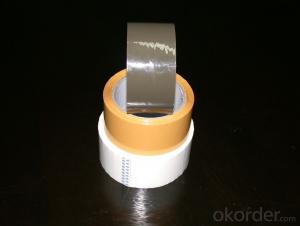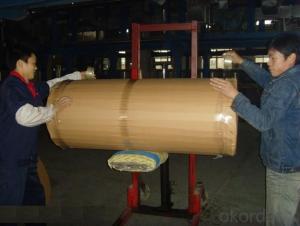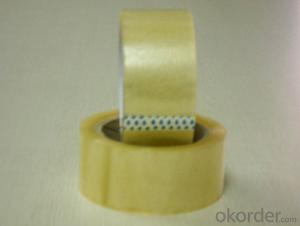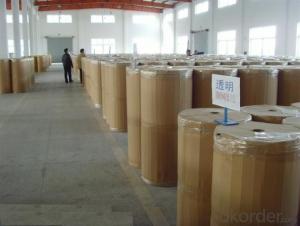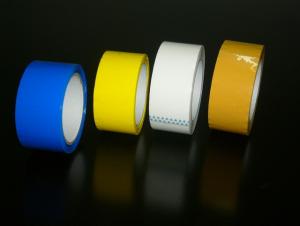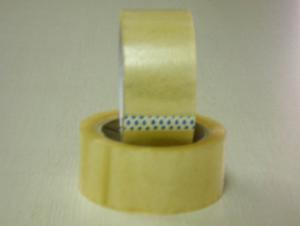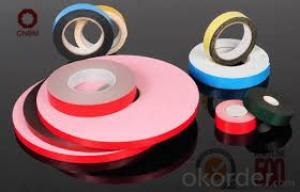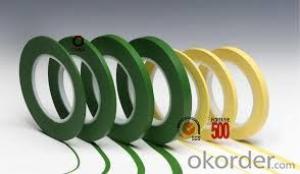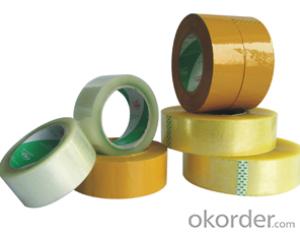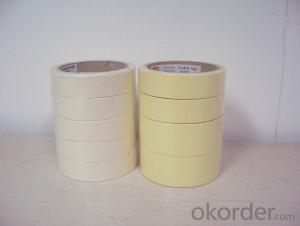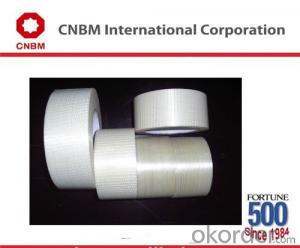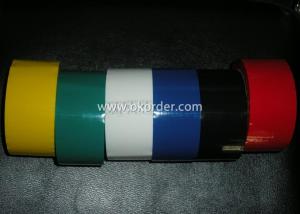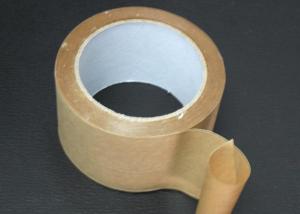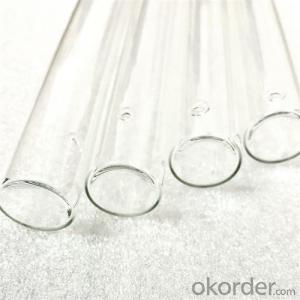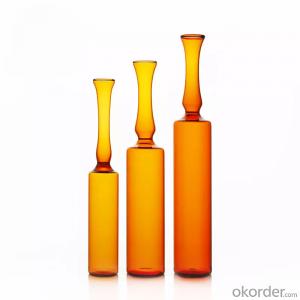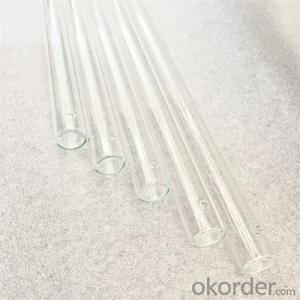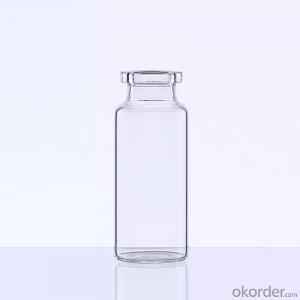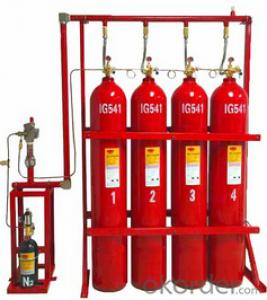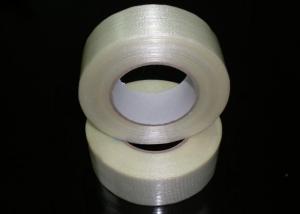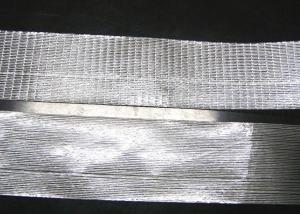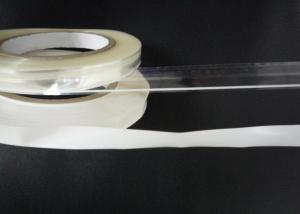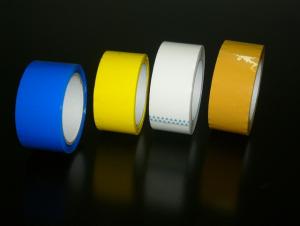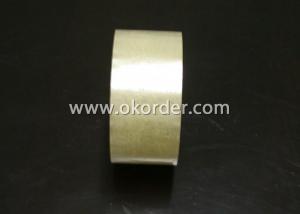Industry tape Cloth tape Foam Tape Aluminum foil tape Tape
- Loading Port:
- Guangzhou
- Payment Terms:
- TT OR LC
- Min Order Qty:
- 3000 m²
- Supply Capability:
- 10000000 m²/month
OKorder Service Pledge
OKorder Financial Service
You Might Also Like
CONSTRUCTION:
Carrier: BOPP film
Adhesive: Water based acrylic adhesive.
TYPICAL PHYSICAL PROPERTIES:
Total Thickness (adhesives + carrier): 42 ± 1 um
Adhesive thickness:20 ± 1 um
Initial Tack: ³ 23#
180O Peel Adhesion (to steel): ³ 6.52 N /25mm
Holding Power: ³ 31 hrs
PACKING:
Core I.D.: 3” (76mm±1)
Jumbo Roll:1280mm x 4000m
Cut Roll: As per customer’s requirements
Application:
Carton sealing & packing, Light duty packaging, bundling, holding, and other office & household use.
REMARKS:
1. The data above are typical results and subject to change without notice.
2. Tolerance: Weight and Thickness: ±10%; Width: ±3mm;
Length: Cut Roll & Log Roll ±0.3m, Jumbo Roll ±0.5%.
3. The products should be stored at room temperature and be kept away wet and/or heat source.
4. It is essential, as with all pressure-sensitive tapes, that the surface to which the tape is applied must be clean, dry, and free of grease and oil.
5. The users should take test and do trial-application on the above products before coming into application so as to witness and ensure suitability for their special purpose and technique.
TAPE FAQ
What is the range of your products?
So far, we manufacture various kinds of double sided adhesive tape, masking tape, kraft tape and BOPP packing tape. To better meet your needs, we can also source other adhesive tapes for you if it is appropriate to do so.
What's the lead time for delivery?
We ensure you a prompt delivery of the goods. We do not stock any of the goods. The production cycle time of 1*20FCL is 2-3 weeks.
How many carriers does your double sided adhesive tapes have?
There are many carriers that our double sided adhesive tapes based on, which are tissue, PET, BOPP, PE foam, EVA foam.
Can Adhero accept the cooperation way of OEM?
Upon receipt of formal authorization, we can accept OEM processing.
What are the international commodity codes for these products?
HS Code: 48231900.
Are you offering only jumbos rolls or slit rolls as well?
We offer Jumbos, logs, and slit rolls. All different sizes are available.
What are the temperatures resistances of your masking tape?
we have two general kinds of masking tapes separately for general purpose 60°C and high temperature 100°C to 160°C.
Are you a manufacturer or just a trader?
We are a professional manufacturer.
How about the quality?
The quality is very good. We have large and advanced product line.welcome to visit our company.

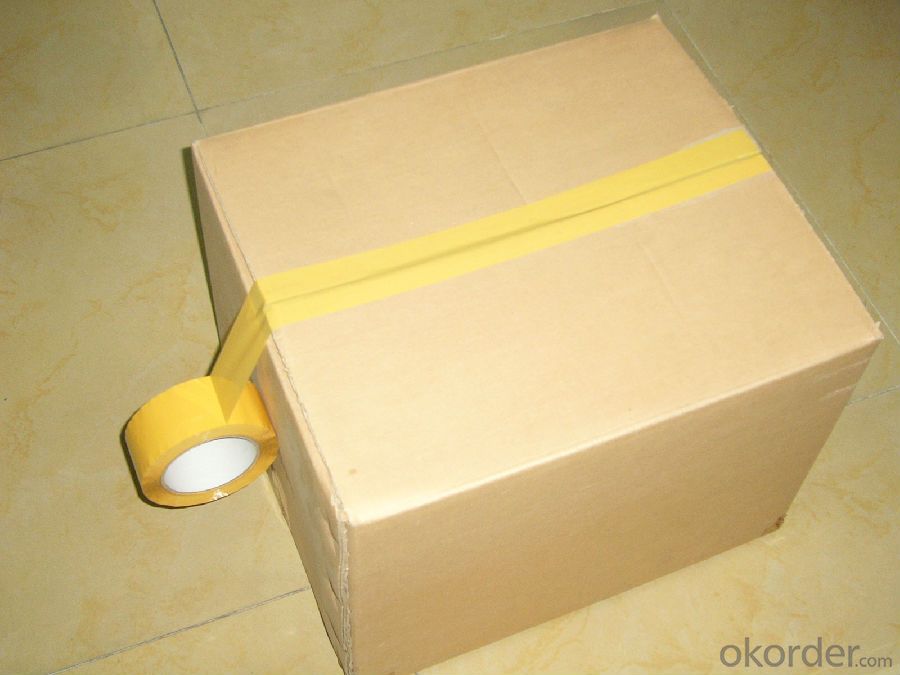

- Q:Can packaging tape be used for sealing plastic garment bags?
- Yes, packaging tape can be used for sealing plastic garment bags. It provides a strong and reliable adhesive that helps keep the bags securely sealed.
- Q:How long does packaging tape last?
- The longevity of packaging tape largely depends on various factors such as the quality of the tape itself, the conditions it is exposed to, and how it is stored. Generally, packaging tape can last for several months to a few years. However, it is important to note that over time, the adhesive properties of the tape may begin to weaken, causing it to lose its sticking power. Exposure to extreme temperatures, moisture, and sunlight can also accelerate the deterioration of the tape. Therefore, it is advisable to use packaging tape within its recommended shelf life and store it in a cool and dry place to ensure its effectiveness when needed.
- Q:How does packaging tape perform on low-friction surfaces?
- Packaging tape generally does not perform well on low-friction surfaces. Its adhesive may struggle to stick firmly, leading to reduced adhesion and the tape easily peeling off. In such cases, it is recommended to use alternative adhesive solutions or methods specifically designed for low-friction surfaces to ensure proper packaging and sealing.
- Q:What kind of material is used in this kind of tape? What are its features? How are they made? And so on!The more detailed you write, the better!
- The thermal decomposition temperature of polypropylene is 350~380 C. The flame is blue with yellow and no smoke
- Q:Can packaging tape be used for sealing plastic or poly bags?
- Yes, packaging tape can be used for sealing plastic or poly bags. Packaging tape is specifically designed to provide a strong and secure seal on various surfaces, including plastic and poly bags. It has an adhesive backing that adheres well to the plastic material, ensuring that the bag remains tightly sealed. However, it is important to note that there are different types of packaging tape available, so it is recommended to choose a tape specifically designed for sealing plastic or poly bags to ensure optimal performance and long-lasting seal.
- Q:How do I prevent packaging tape from becoming too loose?
- Here are some helpful suggestions for preventing packaging tape from becoming loose: 1. Opt for high-quality packaging tape: Invest in packaging tape that boasts a strong adhesive. Inferior quality tapes tend to lose their stickiness quickly, resulting in loose packaging. 2. Ensure cleanliness and dryness of surfaces: Prior to applying the tape, make sure that the surfaces are clean and dry. Dust, moisture, or oil can weaken the adhesive and cause the tape to loosen. 3. Apply firm pressure: When sealing a package, exert firm pressure while affixing the tape onto the surface. Be sure to run your hand or a flat object along the length of the tape to ensure proper adhesion. 4. Utilize overlapping tape: Instead of using only a single strip of tape, overlap it by a few inches. This overlapping technique provides added strength and diminishes the likelihood of the tape becoming loose. 5. Avoid extreme temperature fluctuations: Extreme temperature changes can adversely affect the adhesive properties of packaging tape. Refrain from storing packages in areas with high humidity or extreme temperature variations, as this can cause the tape to loosen. 6. Strengthen with extra tape: If you are sealing a heavy or bulky package, contemplate reinforcing it with additional tape. Apply extra strips of tape across the sides or diagonally to provide supplementary support and minimize the risk of the tape coming loose. 7. Properly store packages: When storing packages, ensure they are stacked correctly and not subjected to excessive pressure or weight. Inadequate storage conditions can cause the tape to loosen over time. By adhering to these recommendations, you can effectively prevent packaging tape from becoming too loose, thereby guaranteeing that your packages remain securely sealed during transit or storage.
- Q:How do I prevent packaging tape from becoming brittle?
- In order to avoid packaging tape from becoming brittle, there are several steps that can be taken: 1. Proper storage is key. Ensure that the packaging tape is stored in a cool and dry location, away from direct sunlight. Extreme temperature fluctuations can lead to tape brittleness, so it is important to maintain a consistent environment to prolong its lifespan. 2. Excessive tension should be avoided when applying the tape. It is best not to stretch the tape too tightly or apply excessive pressure, as this can strain the adhesive and cause it to lose flexibility, resulting in brittleness. 3. Selecting the appropriate tape is essential. Different types of packaging tapes have varying levels of durability. Depending on your specific needs, choose a tape that is specifically designed for heavy-duty or long-term use. These tapes often have stronger adhesives and materials that are less prone to becoming brittle. 4. Handle the tape with care during use. It is important to handle the tape gently to avoid unnecessary stress. Pulling or tugging forcefully on the tape can weaken its structure and lead to brittleness. 5. Replace old tape when necessary. If you notice that your packaging tape has started to become brittle or lose its adhesive strength, it is best to replace it with fresh tape. Using old and brittle tape may compromise the security of your packaging, increasing the risk of it breaking or coming undone during transit. By following these preventive measures, you can help maintain the flexibility and durability of your packaging tape, ensuring it remains reliable for your packaging needs.
- Q:How does packaging tape perform in dusty environments?
- Packaging tape typically functions effectively in dusty environments; however, its performance may vary based on the specific conditions and tape quality. The presence of dust particles has the potential to hinder tape adhesion, resulting in reduced stickiness and package security. Nevertheless, most packaging tapes are designed to resist dust and other contaminants, equipped with a robust adhesive backing capable of withstanding moderate levels of dust. To optimize tape performance in dusty environments, it is advisable to select tapes with higher tack or adhesive strength. These tapes are specifically engineered to provide superior adhesion and stickiness, even in dusty conditions. Additionally, choosing tapes with a thicker backing material can prevent dust particles from penetrating the tape and compromising its adhesive properties. It is crucial to note that excessive dust accumulation can still impact the tape's performance, particularly when fine and abundant. In such cases, it is recommended to regularly clean the package surfaces before applying the tape to ensure optimal adhesion. Adequate surface preparation, such as wiping the area with a clean cloth or using compressed air to remove dust, can enhance tape performance in dusty environments. In conclusion, while packaging tape generally performs well in dusty environments, it is important to consider tape quality, dust exposure level, and proper surface preparation to ensure optimal adhesion and package security.
- Q:How do I remove packaging tape residue?
- To remove packaging tape residue, you can start by applying a small amount of oil or rubbing alcohol to a cloth or sponge and gently rubbing the affected area. This should help loosen the adhesive. Alternatively, you can also try using a mixture of warm water and dish soap, or a commercial adhesive remover. Make sure to test any method on a small, inconspicuous area first to ensure it doesn't damage the surface.
- Q:Can packaging tape be used for sealing electrical or wiring components?
- No, packaging tape should not be used for sealing electrical or wiring components. It does not provide the necessary insulation or protection required for electrical components. It is recommended to use appropriate electrical tape or other approved methods to seal and protect electrical or wiring components.
1. Manufacturer Overview |
|
|---|---|
| Location | |
| Year Established | |
| Annual Output Value | |
| Main Markets | |
| Company Certifications | |
2. Manufacturer Certificates |
|
|---|---|
| a) Certification Name | |
| Range | |
| Reference | |
| Validity Period | |
3. Manufacturer Capability |
|
|---|---|
| a)Trade Capacity | |
| Nearest Port | |
| Export Percentage | |
| No.of Employees in Trade Department | |
| Language Spoken: | |
| b)Factory Information | |
| Factory Size: | |
| No. of Production Lines | |
| Contract Manufacturing | |
| Product Price Range | |
Send your message to us
Industry tape Cloth tape Foam Tape Aluminum foil tape Tape
- Loading Port:
- Guangzhou
- Payment Terms:
- TT OR LC
- Min Order Qty:
- 3000 m²
- Supply Capability:
- 10000000 m²/month
OKorder Service Pledge
OKorder Financial Service
Similar products
New products
Hot products
Related keywords
